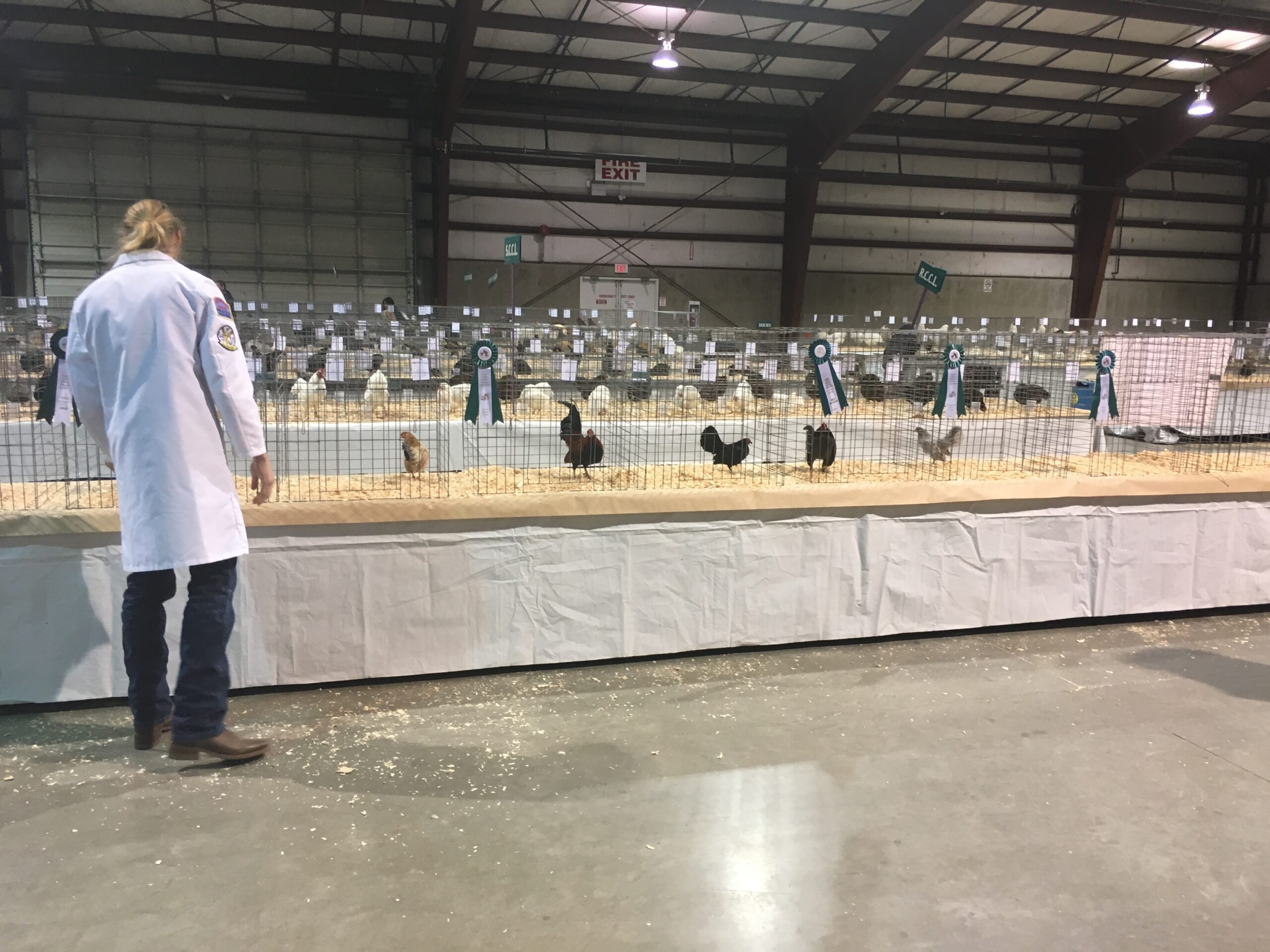This is part two of a series of three articles by Clayton Botkin on making the most of your poultry show experience. Click here for part one of the poultry show experience series.
When you arrive at the show, watch for signage directing you to the entry point. There will usually be signs on nearby fencing, roadside or on doors for the entry point. Be sure to pay any applicable admission if necessary. The costs for hosting these events have increased rapidly, and many shows now charge a nominal fee for spectators. It is important to be respectful of this, recognizing the sincere efforts everyone puts into these events for all to enjoy.
In the show hall, there will likely be an information or administration table. You should always head there first to see if there are any available exhibitor lists or show programs. It is more common to list entries by exhibitor number instead of printing names on cards, and the show management will normally offer a list of the numbers and names of exhibitors. Event hosts will be more than happy to connect with new exhibitors and guests, and the people running the table will likely be more than happy to answer your questions. Be prepared to introduce yourself to them and have any questions ready. It is very important not to take too much of their time though, particularly the show management team as they will be incredibly busy preparing for the day ahead of them, so a brief introduction and any burning questions is all you should expect on first entry.

Before you start your poultry experience, have a look around, observe the layout and the location. Usually, the different species will be housed near to each other – ducks and geese (waterfowl), large fowl and bantams, guineas, and turkeys (land fowl). You can likely wander as you please up and down the rows, being mindful of any directional requirements that may exist, and also remember, often times shows will close rows during judging to reduce any risks of tampering with exhibits and limit traffic to allow the judge to focus on their task at hand. Prior to entering the show, it is a good idea to check out the activities the host organization might also offer. These could include things like raffles, silent auctions, sales areas, etc. If you intend to participate in these activities, investigate when they end through the day, and how you can engage in them early, when there is little time pressure.
When you are ready to head to experience the poultry, here are some things to think about as you walk the many aisles:
- Never touch, feed, or handle the birds. They are not yours. They represent the many months and years that exhibitors have invested in getting them to the point you are now welcome to enjoy and share with them.
- Keep your distance. This can be challenging at small venues as rows will be tight. Some birds may be more uneasy than others and leaving them room will allow them to remain calm and maintain their condition.
- Leaving room for exhibitors and show management to pass is very important. Stay to one side of the aisle whenever you can and keep up with the flow of other guests. Do not go under or over tables to leave aisles. This is a safety threat to you, other guests, and the birds.
- If you are curious about what you are looking at, check out the coop cards. Coop cards should tell you the breed, variety, and sex/age of the birds in front of you. These cards will be on the top or front of the cage and should be easily identifiable. If judging has been completed in a class, the placings will be there as well and any awards the specimen may have been awarded.
- If a particular breed is of interest to you, take a picture of the bird and the coop card. This way, you can look up the exhibitor later and there is no need to hover around the particular area waiting for someone who may or may not be the bird owner.
Clayton Botkin, P.Ag. B.Sc. (Hons), APA General Licensed Judge #1234
